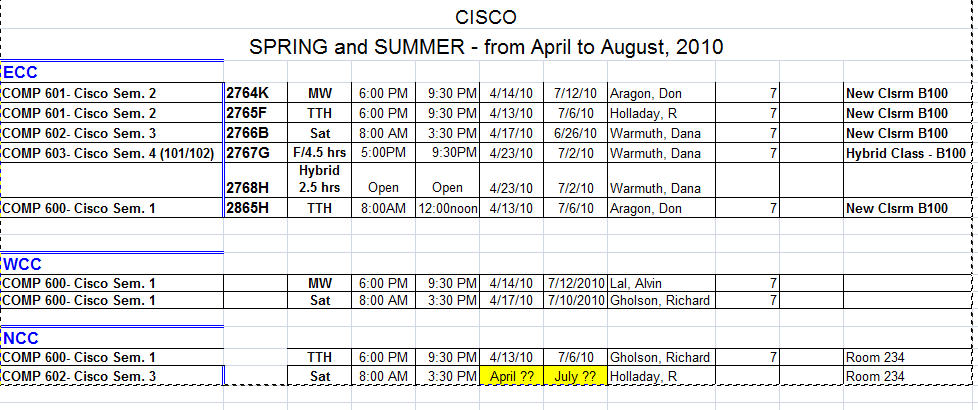You may call me 252-9522 (cell)
Home Phone 656 0846
CCNA EXPLORATION Syllabus
Spring, 2010
|
Optional
Network Fundamentals, CCNA Exploration Companion Guide, 2nd Edition |
Optional
Routing Protocols and Concepts, CCNA Exploration Companion Guide, 2nd Edition |
Optional
Routing Protocols and Concepts, CCNA Exploration Labs and Study Guide, 2nd Edition |
**** Syllabus subject to revision *****

